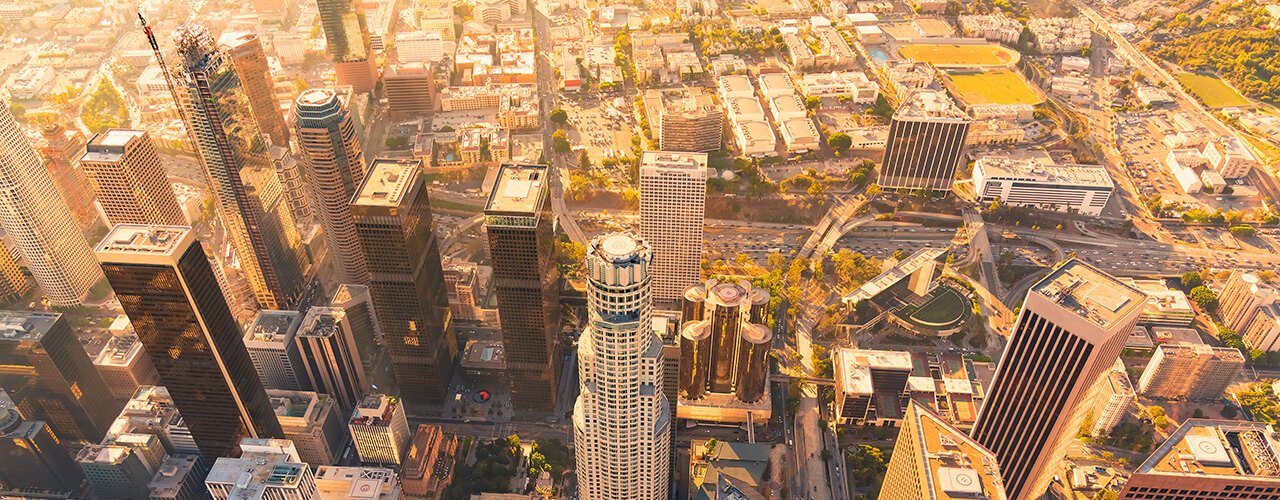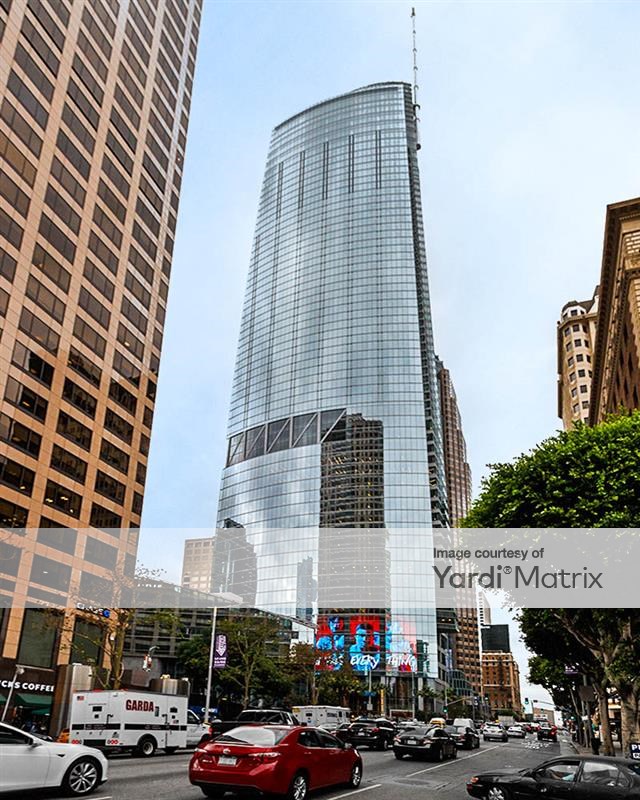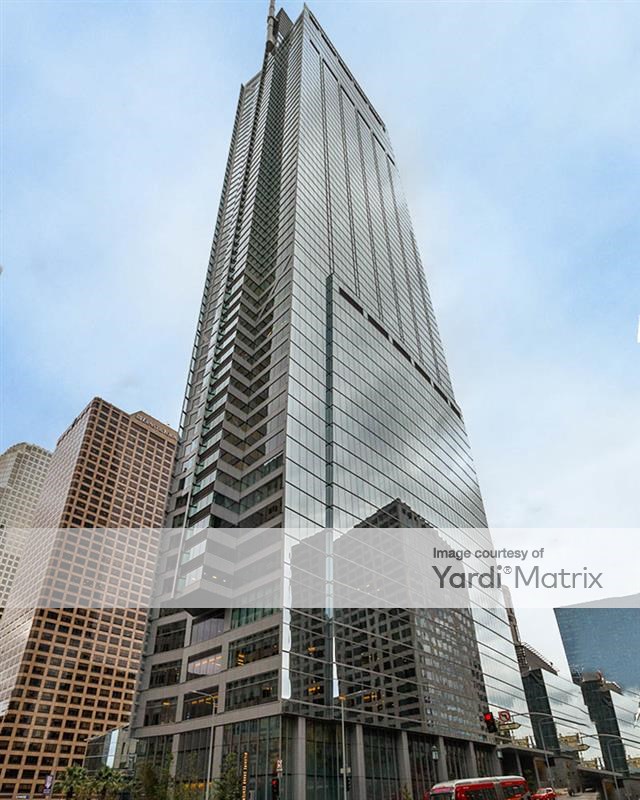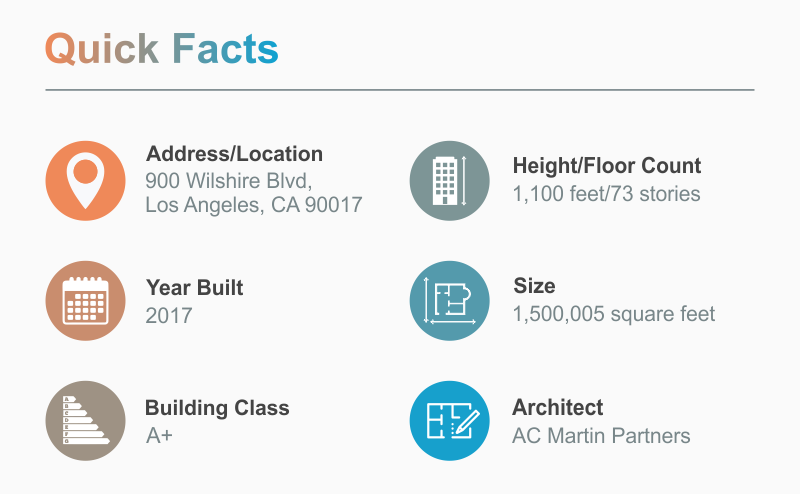The Wilshire Grand Center has become a prominent feature of the Downtown LA skyline, but many people aren’t aware of its record-breaking height and noteworthy construction. Upon its completion in 2017, it became the 11th tallest building in all the United States and the tallest west of the Mississippi River (including of course being the tallest in California).
Although it enjoys the title of tallest building in Los Angeles, the Wilshire Grand Center has received this recognition not through its highest rentable floor space but because of a unique feature. The decorative sail and spire located at the top of the edifice is what makes it the tallest construction in LA—and this is quite a rare sight in the city’s otherwise homogeneous skyline, governed by flat roofs throughout.
This architectural trend which dictates the exact style of buildings in Downtown Los Angeles exists largely due to practical reasons. After a devastating 1974 fire in Sao Paolo, Brazil, which claimed many lives because helicopters could not land on the buildings’ rooftops due to lack of landing strips, the LA City Fire Department ordered for all developments to have flat roofs to avoid such a tragedy. The Wilshire Grand Center is only exempt from this rule because of the advanced technology it uses regarding fire safety, thus making it stand out from the crowd of flat-roofed skyscrapers with its decorative sail and spire.
The ancestor of the Wilshire Grand Center was the Hotel Statler, built in 1952. At the time the building permit was issued it was the largest in all of Los Angeles and upon its completion became a landmark of the downtown core. During its long lifespan it was sold thrice to some of the biggest corporations in the industry, firstly to Hilton Hotels & Resorts in 1954 and then to Reliance Group in 1983. In 1989 the building, then known as the Los Angeles Hilton, was purchased by Korean Air, changing the hotel’s management and ultimately renaming it as the Wilshire Grand Center in 1999.
After the CEO and chairman of Korean Air decided to do a complete redesign of the iconic building, it was totally deconstructed between October 2012 and November 2013. This idea was in line with the city’s efforts to revive Downtown LA’s Figueroa Street corridor and develop it similarly to New York’s iconic Times Square.
The official deconstruction ceremony was held on the 21st of November 2003 and the construction of the brand new Wilshire Grand Center can be said to have begun from that date. Early proposals made by Thomas Properties envisioned the building as having two towers instead of one, but since the firm’s approach didn’t exactly impress the owners, the entire project was overtaken by AC Martin Partners.
The 1,100-foot, 73-story landmark was completed on the 23rd June 2017. It boasts 1,500,005 square feet of total floor area, made up of 67,000 square feet of retail, 677,000 square feet of Class A office space and 756,005 square feet used as a hotel. The entire project cost $1.2 billion dollars. The building’s sail-shaped crown is illuminated at night by vibrant LED lights, in line with the city’s plan to transform Figueroa Street into a vivid light-and-sign district, to further emphasize the emblematic style of Downtown Los Angeles.
The Wilshire Grand Center currently houses a handful of diverse institutions, including retail outlets, a shopping mall, observation decks, a large office complex and the InterContinental Hotel with 900 rooms and suites.
















